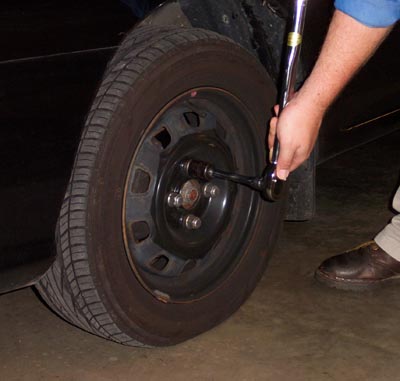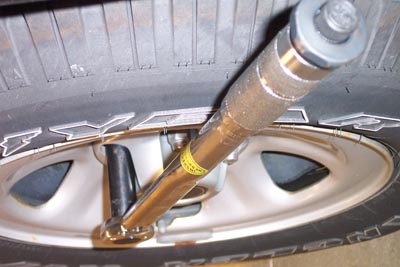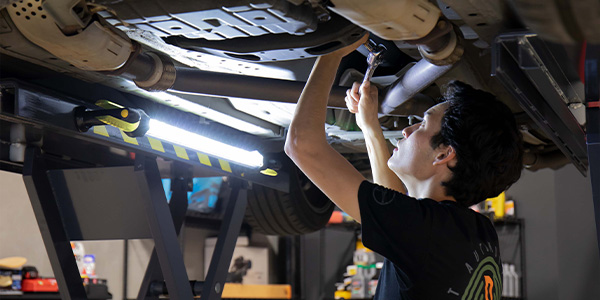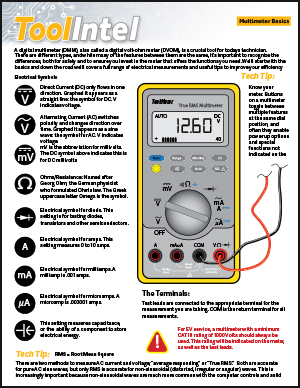By Steve LaFerre
Contributing Editor
TIRE REVIEW Magazine
It’s not difficult to torque wheel fasteners properly, but it’s not difficult to foul up the job, either. We’re not using double talk here; we’re shootin’ straight from the hip. The easy part of proper wheel fastener torquing is knowing the vehicle manufacturer torque specifications for a particular passenger car, light truck or medium truck, and following those instructions to the letter.
 Fastener torque specifications can be found in the owner’s manual of the vehicle in question. By simply following those specifications, you can avoid unwanted comebacks.
Fastener torque specifications can be found in the owner’s manual of the vehicle in question. By simply following those specifications, you can avoid unwanted comebacks.
Today’s wheel fasteners are primarily a straight-tapered seat type, which is torqued into an alloy wheel that has a hardened seat. In this case, the wheel fastener matches the taper of the bolt hole in the wheel. As this type of wheel fastener is tightened, it is driven into the hole, thus acting as a wedge. This force is responsible for keeping the wheel attached to the vehicle.
MUSHROOMING PROBLEMS
Also making life a lot easier is the move away from steel wheels to much stronger alloy wheels. Although some steel wheels remain, the issue of “mushrooming” a wheel fastener into a wheel until the lug-nut material and the threads of the wheel are practically married is just about ancient history.
Still, an overzealous tire tech and an impact wrench running off shop line pressure of 150 psi can easily generate 120- to 130-foot-pounds of torque, far more than necessary for today’s wheels. Any tech still torquing fasteners in that manner runs the risk of causing uneven pressure on the brake rotor.
How? In the interest of saving time, the tech may over-torque one or more wheel fasteners to the point that they distort the brake rotor. The power of over-tightening a wheel fastener should not be underestimated. Those using an impact wrench exclusively may cause a pulsating brake pedal and premature brake wear. Customers don’t like that. Further, using an impact wrench with a machine-gun approach can put the kind of stress on a wheel or wheel stud that can cause it to crack or weaken, preparing the way for future failure.
Metal changes its characteristics when placed under extreme stress or heat. Wheel fasteners are made to meet a certain strength level, along with the ability to withstand “X” amount of torque. Exceeding the torque load limit will cause wheel fasteners to stretch and ultimately fail. That’s the bad news.
Here’s the good news. Gear back the impact wrenches in your outlet to 30- to 40-foot-pounds to seat the wheel fasteners, and then adjust to the final torque specifications with a torque wrench, or torque stick, as it’s called. Your job, and the job of your techs, is to be 100 percent correct in tightening down wheel fasteners to manufacturer specifications.
MONSTER TORQUE We all remember the days of torquing a wheel fastener to 110-foot-pounds. Not only did we have to use an impact wrench to undo our work, the poor consumer had no chance of loosening those wheel fasteners when a tire went down. Even with a star wrench and the brute strength of a Mike Tyson, it was possible to rotate the entire tire/wheel assembly without ever loosening the wheel fastener.
We all remember the days of torquing a wheel fastener to 110-foot-pounds. Not only did we have to use an impact wrench to undo our work, the poor consumer had no chance of loosening those wheel fasteners when a tire went down. Even with a star wrench and the brute strength of a Mike Tyson, it was possible to rotate the entire tire/wheel assembly without ever loosening the wheel fastener.
Although it hardly seems possible given those vivid memories, the truth is that the average foot-pounds of torque needed to keep today’s wheel fasteners safely in place is between 65- and 80-foot-pounds. Again, that’s on average. To many of us, this doesn’t seem like enough torque to keep the tire/wheel assembly from leaving the vehicle on which it is mounted.
Even the robust Range Rover with its extra-large wheel fasteners requires just 80-foot-pounds of torque. Give a tire tech a torque wrench, and tell him to torque a wheel fastener to 80-foot-pounds. He’ll tell you the wheel will fall off. Not true. Not anymore.
Looking a bit deeper, we all know torque must be applied evenly when working with wheel fasteners. Yet, how many of us still use an air wrench and a socket until we feel – as in “gut feel” – that the job is done? That’s a bad idea. Failing to use a torque stick on every wheel fastener means a tech is going to fall short of being 100 percent correct. In fact, failure to complete proper wheel torquing is right up there with improper tire inflation as one of the most overlooked tire maintenance issues.
TROUBLE SPOTS
Not only should your shop torque to specs, you should also inspect the threads and mating surfaces to ensure everything will fit clean and snug onto clean, uniform surfaces. Another trouble spot can occur if wheel fasteners are not OE. When remounting a tire/wheel assembly, make sure the wheel fastener is absolutely compatible with the type of seat into which it will be torqued. Check the fastener thread engagement. Every stud must be long enough to accommodate a wheel fastener’s length and diameter. Sounds simple, but some people miss this point.
It’s a must to check and retorque all fasteners on a new installation after the first 50-100 miles of use. Failure to retorque is unsafe for the motorist and could cause damage or injury. Also, retorquing must be done any time wheel fasteners are removed for any reason.
This strong suggestion is offered just in case the wheel fasteners are not fastened in an even-load distribution pattern. A concentrated torquing load often occurs on the first wheel fastener the tech touches. When this area is drawn tight against the hub, a warped center section of the wheel is a possibility.
Once the wheel heats up, that set can become a permanent characteristic of the wheel. Hence, the rule of thumb to retorque all wheel fasteners after the first 50 miles of use. All of this plays into something you may hear far too often: “I have a vibration in my car.” That is often followed by premature tire wear and brake pedal pulsation. In fact, some say the number-one cause of brake pedal pulsation is uneven wheel fastener torque.
A difference of 20 percent between any two wheel fasteners is too much. Try solving this problem by loosening all the wheel fasteners, cleaning the stud threads, lightly coating them and the nut chamfer with clean engine oil and reinstalling the wheel fasteners finger-tight or with a geared-back impact wrench.
Then, using a crisscross pattern, retorque every wheel fastener to about one-third of the specified torque setting, then to two-thirds and finally to the specified torque.
Is there more to this subject? There’s always more. But, we don’t expect you to be advanced-degree mechanical engineers or metallurgists. Instead, make proper tire inflation and wheel torquing part of your tire service policy. Put it on paper, and make sure techs adhere to it every time they tighten wheel fasteners. It’s just good business sense.














